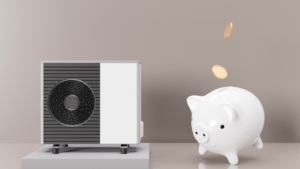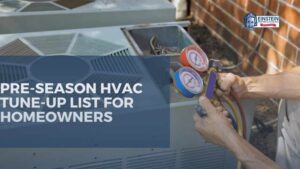When winter arrives, a well-functioning furnace becomes a crucial element in maintaining a comfortable and warm Bend home. However, furnace repairs can be not only inconvenient but also costly. To ensure your furnace operates efficiently throughout the colder months and to minimize the risk of breakdowns, consider the following factors.
1. Regular Furnace Maintenance
Perform Annual Inspections:
- Schedule a professional furnace inspection at least once a year to identify and address potential issues before they escalate.
- Regular inspections can catch problems like worn-out parts, dirty filters, or malfunctioning components early on. Checking “furnace repair near me” can also help you find the best technicians in your local area.
Change Air Filters:
- Replace air filters regularly, as clogged filters can strain the furnace, reducing its efficiency and potentially causing damage.
- Check filters monthly and replace them every 1-3 months, depending on the type of filter and usage.
Clean Vents and Ducts:
- Ensure that vents and ducts are free of dust, debris, and obstructions.
- Clean vents and ducts regularly to maintain optimal airflow, preventing strain on the furnace.
2. Monitor Thermostat Settings
Set Appropriate Temperatures:
- Avoid setting the thermostat too high, as this can lead to overheating and increased wear on the furnace.
- Program your thermostat to a comfortable yet energy-efficient temperature, especially when you’re away.
Invest in a Programmable Thermostat:
- Upgrade to a programmable thermostat to regulate temperature settings automatically.
- This helps prevent unnecessary strain on the furnace by adjusting temperatures based on your schedule.
3. Ensure Proper Ventilation
Clear Vent Obstructions:
- Ensure that vents are not blocked by furniture, curtains, or other objects.
- Blocked vents can cause uneven heating and force the furnace to work harder than necessary.
Ventilation System Inspection:
- Regularly inspect the entire ventilation system for leaks, blockages, or damage.
- Adequate ventilation is crucial for the furnace to operate efficiently and safely.
4. Manage Furnace Fuel
Use Quality Fuel:
- If your furnace operates on oil or gas, use high-quality fuel to prevent clogs and damage to the system.
- Poor-quality fuel can lead to residue buildup and decrease the furnace’s lifespan.
Monitor Fuel Levels:
- Regularly check fuel levels to ensure an uninterrupted heat supply.
- Running out of fuel can lead to the furnace shutting down unexpectedly.
5. Address Pilot Light Issues
Keep the Pilot Light Clean:
- If your furnace has a pilot light, ensure it is clean and free of dirt and debris.
- A dirty pilot light can result in ignition problems and potential furnace malfunctions.
Check for Consistent Flame:
- Monitor the pilot light flame for consistency and color.
- An irregular flame may indicate issues with the gas supply or other components that need attention.
6. Inspect and Lubricate Moving Parts
Regular Lubrication:
- Keep moving parts, such as the blower motor, well-lubricated to reduce friction and wear.
- Follow the manufacturer’s guidelines for lubrication frequency and use the recommended lubricants.
Check for Loose Parts:
- Regularly inspect all components for loose or damaged parts.
- Tighten loose connections to prevent further damage and potential furnace failure.
7. Monitor System Sounds and Odors
Pay Attention to Unusual Sounds:
- Be attentive to any unusual noises, such as banging, squealing, or rattling, and check for complete furnace repair tips.
- Unusual sounds may indicate underlying issues that need prompt attention.
Address Unusual Odors:
- Investigate and address any strange odors emanating from the furnace.
- Foul smells can be a sign of gas leaks or other potentially hazardous situations.
8. Keep the Area Around the Furnace Clean
Clear Clutter:
- Ensure the area around the furnace is free from clutter and combustible materials.
- A clean and organized space minimizes the risk of accidents and facilitates easier furnace inspections.
Provide Adequate Space:
- Allow sufficient space around the furnace for proper ventilation and maintenance access.
- Crowded spaces can impede airflow and make it challenging to address issues promptly.
9. Invest in a Carbon Monoxide Detector
Install Carbon Monoxide Detectors:
- Place carbon monoxide detectors near the furnace and in key areas of your home.
- Carbon monoxide leaks are a serious hazard, and detectors can provide early warnings, preventing potential health risks.
Test Detectors Regularly:
- Regularly test and replace batteries in carbon monoxide detectors.
- Ensure that detectors are functioning correctly to safeguard against this colorless, odorless gas.
10. Know When to Call a Professional
Recognize Warning Signs:
- Be aware of warning signs of furnace repair such as frequent cycling, uneven heating, or unusual smells.
- If you notice these signs, it’s crucial to consult a professional technician promptly.
Schedule Regular Professional Inspections:
- In addition to DIY maintenance, schedule regular professional inspections.
- Professional technicians can identify and address issues that may not be apparent during routine home inspections.

What Happens If I Don’t Do My Furnace Repairs?
Neglecting common signs that you need furnace repair can have serious consequences, impacting both your comfort and your wallet. Understanding the potential outcomes of avoiding necessary maintenance and repairs is crucial in maintaining a functional heating system.
1. Reduced Energy Efficiency
- Over time, neglected furnaces become less energy-efficient, leading to increased energy consumption.
- Reduced efficiency means higher utility bills as the furnace works harder to produce the same amount of heat.
2. Uneven Heating Distribution
- Lack of professional furnace repairs can result in uneven heating distribution throughout your home.
- Certain rooms may become colder than others, making it challenging to maintain a comfortable living environment.
3. Increased Wear and Tear
- Ignoring minor issues can lead to increased wear and tear on furnace components.
- The more strain on the system, the faster it will age, potentially shortening its lifespan.
4. Risk of Complete System Failure
- Neglected repairs can escalate into more significant problems, increasing the risk of complete system failure.
- A malfunctioning furnace can leave you without heat in the dead of winter, leading to discomfort and potential health hazards.
5. Higher Repair Costs in the Long Run
- Small issues left unaddressed can snowball into larger, more expensive problems. Make sure you know how to check for furnace repair signs to avoid more issues.
- Delaying repairs often results in higher costs when the furnace finally requires professional attention.
6. Safety Hazards
- Ignoring repairs, especially those related to gas furnaces, can pose safety hazards.
- Gas leaks, carbon monoxide leaks, or faulty pilot lights are serious issues that demand immediate attention to prevent health risks and accidents.
7. Voided Warranty
- Neglecting regular maintenance and required repairs may void the manufacturer’s warranty.
- Losing warranty coverage means you’ll be solely responsible for the costs of any necessary replacements or repairs.
8. Decreased Indoor Air Quality
- Furnaces with neglected repairs may circulate dust, allergens, and pollutants throughout your home.
- This can lead to decreased indoor air quality, affecting the health and well-being of occupants.
9. Emergency Situations
- A poorly maintained furnace is more likely to break down unexpectedly, leading to emergency situations.
- Emergency repairs often come with additional costs and inconveniences.
10. Potential Health Risks
- Malfunctioning furnaces, particularly those using gas or oil, can pose health risks.
- Carbon monoxide leaks, for example, are invisible and odorless, making them especially dangerous without proper maintenance.
When Do I Need to Replace My Furnace: Signs for Replacement
Knowing when it’s time to replace your furnace is crucial for maintaining a reliable and efficient heating system. Recognizing the signs that indicate the need for a new furnace can help you avoid unexpected breakdowns and ensure the comfort and safety of your home.
1. Age of the Furnace
- Typical Lifespan: Furnaces generally last between 15 to 20 years.
- If your furnace is approaching or surpassing this age range, it’s wise to consider a replacement, as older units are more prone to breakdowns and efficiency issues.
2. Rising Energy Bills
- A sudden and unexplained increase in energy bills may signal declining furnace efficiency.
- Older furnaces lose their ability to operate efficiently, leading to higher energy consumption and costs.
3. Frequent Repairs
- If you find yourself frequently calling for repairs and the costs are adding up, it may be more cost-effective to invest in a new furnace.
- Ongoing repairs are a clear sign that your current system is struggling to maintain reliability.
4. Uneven Heating or Cold Spots
- Inconsistent heating throughout your home or persistent cold spots are indications of a furnace struggling to distribute heat evenly.
- This issue may not be effectively resolved with repairs and could be a sign that replacement is necessary.
5. Strange Noises
- Unusual sounds such as banging, rattling, or squealing may indicate significant issues within the furnace.
- If these noises persist despite repairs, it may be a sign that the furnace is nearing the end of its operational life.
6. Carbon Monoxide Leaks
- Detection of carbon monoxide (CO) leaks is a critical sign that your furnace is posing a severe safety hazard.
- CO is odorless and colorless, so invest in a carbon monoxide detector and be alert to symptoms like dizziness, nausea, or headaches.
7. Yellow Burner Flame
- A furnace’s burner flame should be consistently blue. A yellow flame may indicate the presence of carbon monoxide.
- If you observe a yellow flame, it’s imperative to consult a professional technician and consider furnace replacement.
8. Lack of Comfort Despite Repairs
- If you’ve invested in repairs but still experience discomfort, such as uneven heating or inconsistent temperatures, it may be a sign that your furnace is no longer capable of meeting your home’s needs.
9. Outdated Technology
- Advancements in furnace technology have resulted in more energy-efficient and environmentally friendly models.
- If your furnace lacks modern features, upgrading to a newer, more efficient model could lead to long-term cost savings.
10. Visible Signs of Wear and Rust
- Visual inspections can reveal signs of wear, rust, or corrosion on the furnace.
- Extensive damage may be an indicator that the furnace is reaching the end of its usable life.
11. Difficulty in Maintaining Temperature
- If your furnace struggles to maintain a consistent temperature, especially during extreme weather conditions, it may be a sign of declining performance.
- Newer furnaces are designed to provide better temperature control and comfort.
12. Changes in Air Quality
- Deteriorating furnaces can contribute to poor indoor air quality, circulating dust, allergens, and pollutants.
- If you notice a decline in air quality despite regular maintenance, it may be time to consider a new furnace.
In conclusion
Proactive and preventive measures play a pivotal role in avoiding furnace repairs. By implementing these strategies, you can not only extend the life of your furnace but also ensure a consistent and efficient heating experience during the winter months. Regular maintenance, proper monitoring, and timely professional check-ups from Einstein Heating and Cooling are key to minimizing the risk of unexpected furnace breakdowns and the associated repair costs.








